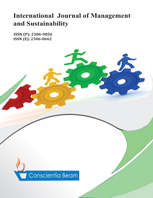Value creation of green banking technology sustainability: The role of initial trust
DOI:
https://doi.org/10.18488/11.v13i3.3834Abstract
This study aims to identify the factors influencing GBT acceptance. Questionnaires were distributed online to users of green banking technology in Indonesia, with 456 respondents. Reducing emissions and utilizing environmentally friendly technologies have been and are still necessary to address the issue of climate change. Green banking technology (GBT) is a banking technology that supports green business. GBT can carry out online banking activities to reduce excessive paper use. The data was analyzed using Partial least squares (PLS). The results show that perceived usefulness (PU) is the strongest predictor for continuously supporting GBT. However, perceived ease of use (PEOU) cannot positively influence technology adoption. The rapid growth of digitalization allows users to become familiar with the technology, so convenience is not the determining factor. Meanwhile, on the aspect of trust and value, it has been proven to be a strong link. This research offers academics and practitioners a perspective on green business practices using GBT. Green banking practices, particularly those focusing on reducing environmental footprints, like transitioning to online banking, should be further explored and promoted. This study also recommends optimizing the functionality of green banking technology to suit user needs. In addition, the level of trust is also a serious concern because it can determine whether someone will continue or leave GBT.

